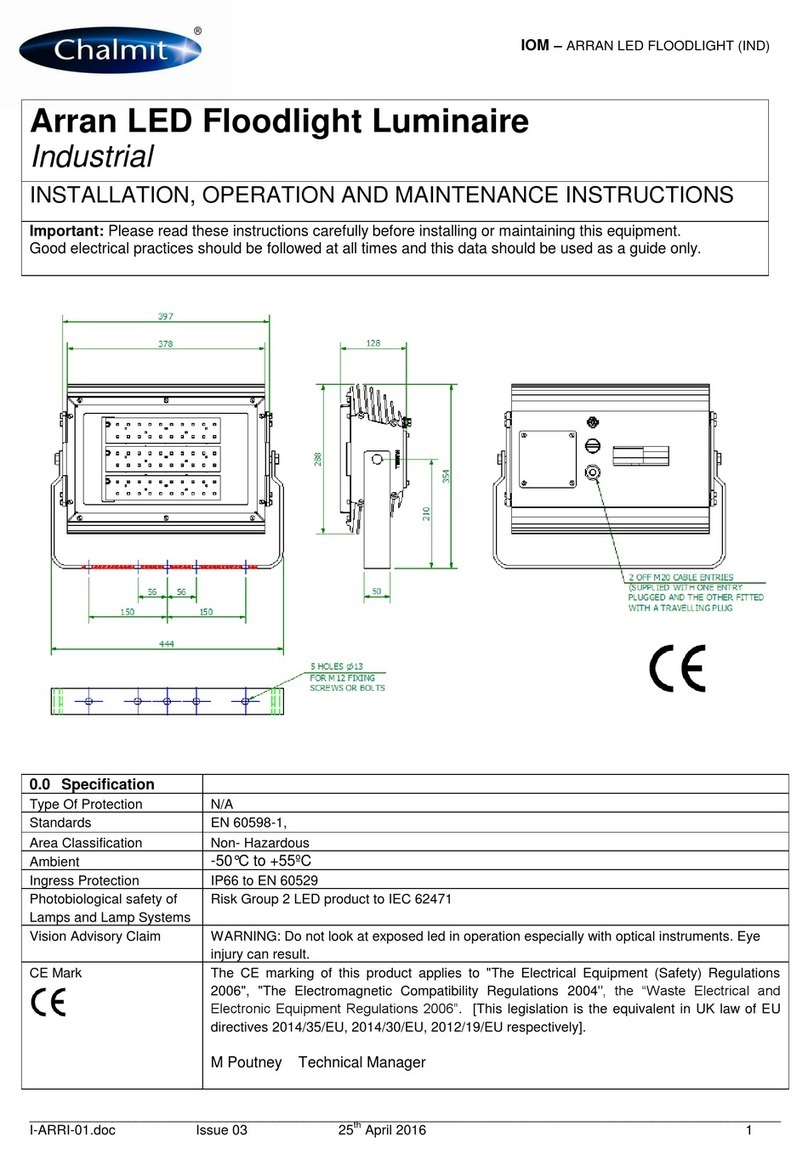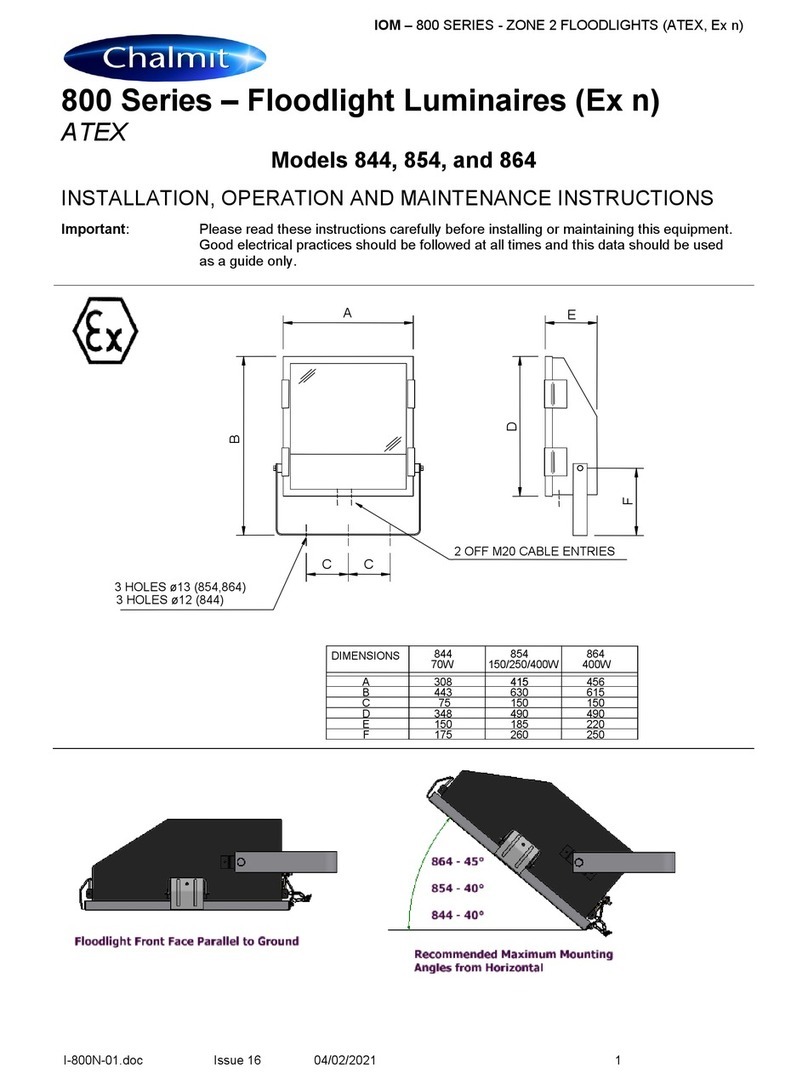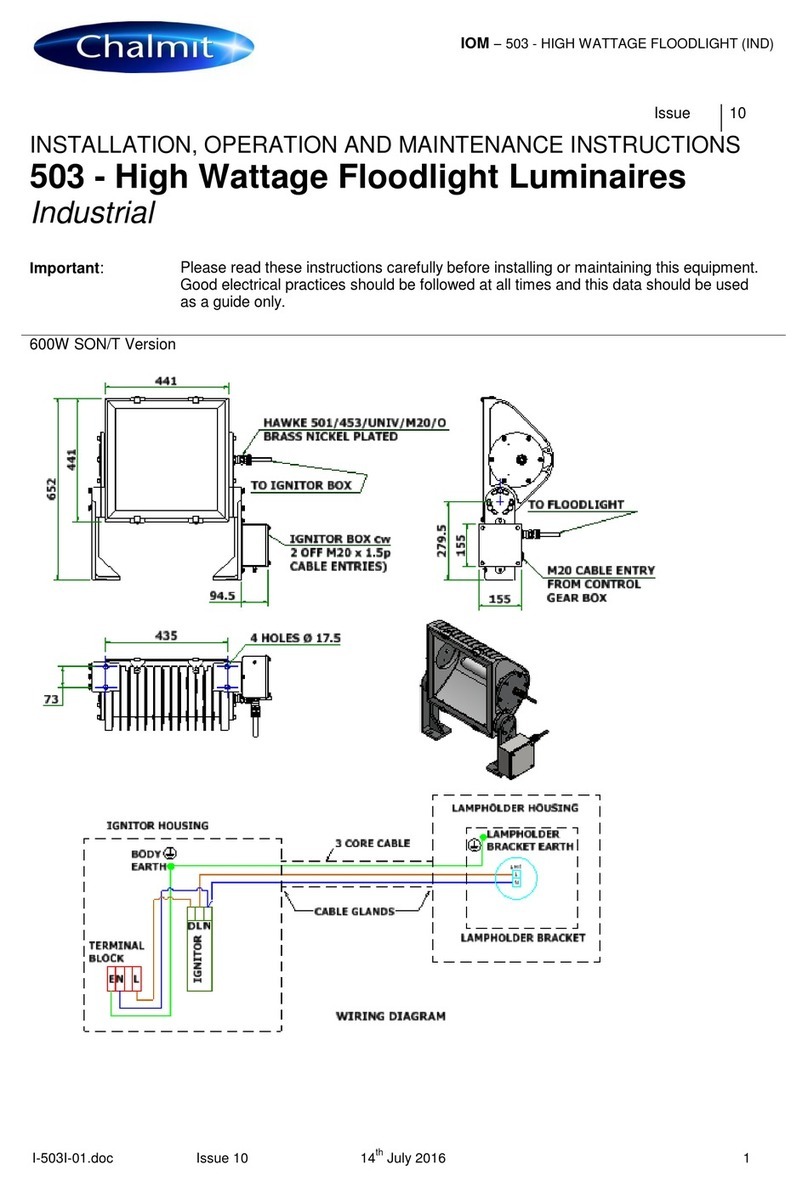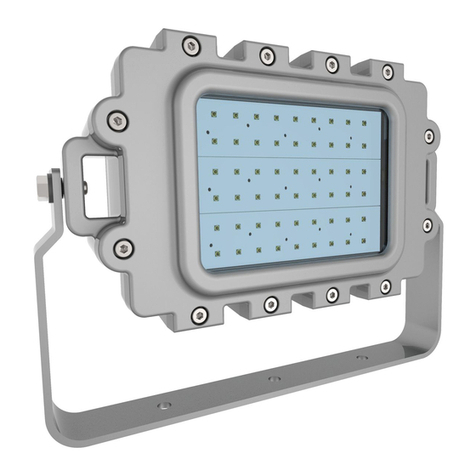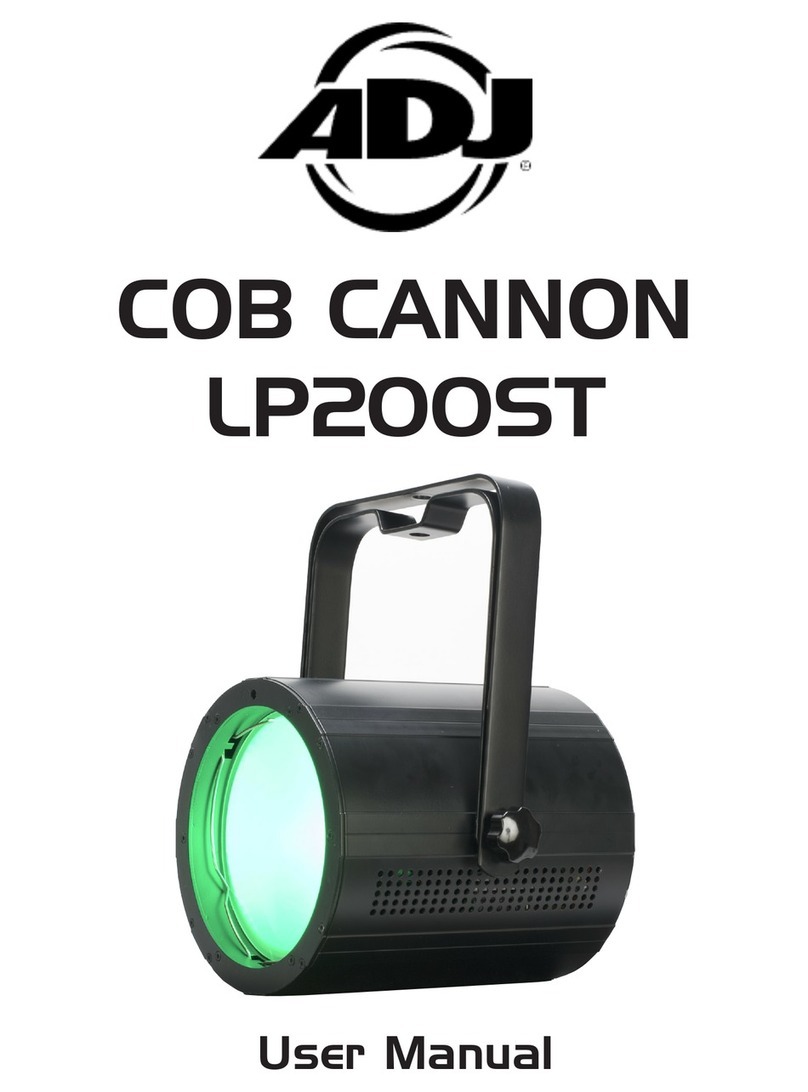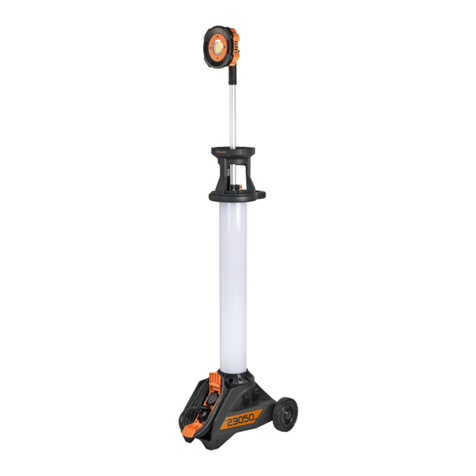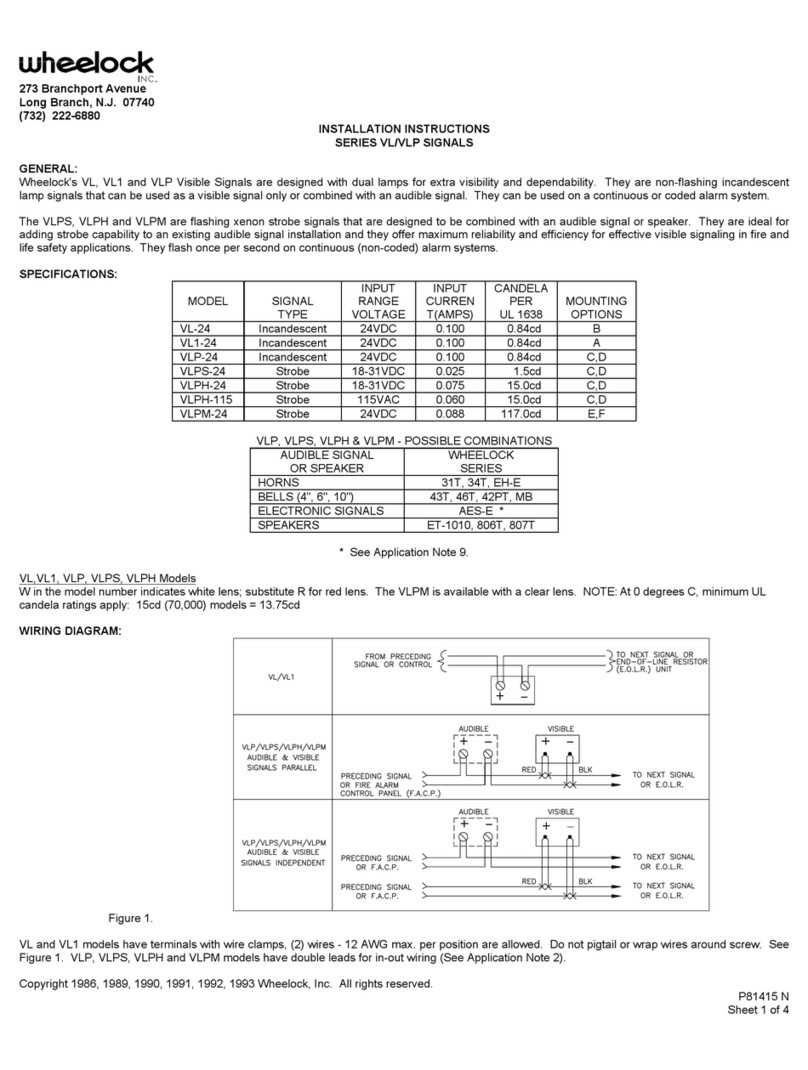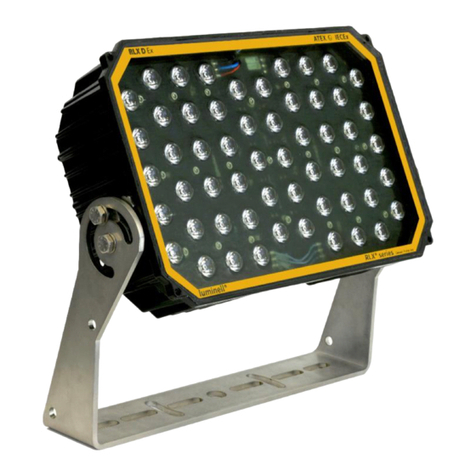Chalmit 844I Manual

I-800I-01.doc Issue 06 November 2013 1
IOM – 844I, 854I & 864I - SS FLOODLIGHTS (IND)
Issue 06
INSTALLATION, OPERATION AND MAINTENANCE INSTRUCTIONS
800 Series - Stainless Steel Floodlight Luminaires
Industrial Models 844I, 854I, & 864I
Important: Please read these instructions carefully before installing or maintaining this equipment.
Good electrical practices should be followed at all times and this data should be used
as a guide only.
A
E
D
F
C C
B
3 HOLES ø13 (854, 864)
2 OFF M20 CABLE ENTRIES
DIMENSIONS 844I
70/100W 854I
150/250/400W 864I
400/600W
A
B
C
D
E
F
415415
630
150
490
185
260
308
443
75
348
175
175
465
615
150
500
190
250
3 HOLES ø12 (844)

I-800I-01.doc Issue 06 November 2013 2
IOM – 844I, 854I & 864I - SS FLOODLIGHTS (IND)
0.0 Specification
Area of Application Non-hazardous
Standard EN 60598-1 : 2000
Ingress Protection IP66/67 to BS EN 60529:1992
CE Mark
The CE marking of this product applies to "The Electrical Equipment (Safety)
Regulations 1994", "The Electromagnetic Compatibility Regulations 1992", the “Waste
Electrical and Electronic Equipment Regulations 2006”.
[This legislation is the equivalent in UK law of EC directives 2006/95/EC, 2004/108/EC
and 2002/96/EC respectively].
1.0 Introduction – 800 Series Stainless Steel Floodlight
The type 844I, 854I and 864I floodlights are manufactured in marine grade 316 stainless steel and are designed
for use in marine or hostile environments. The maximum recommended operating ambient (tamb) is 40ºC for
indoors or still air and 50ºC for outdoors or where situated in free moving air.
Note: All the floodlights in this series are suitable for tubular lamps only.
The range of models is outlined in TABLE 0.
2.0 Storage
Luminaires and control gear boxes are to be stored in cool dry conditions preventing ingress of moisture and
condensation. Any specific instructions concerning emergency luminaires must be complied with.
3.0 Installation and Safety
3.1 General
Installation must be made in accordance with good electrical procedure and local codes of practice. In the UK
the requirements of the “Health and Safety at Work Act” and “The Electricity at Work Act” must be met. The
luminaires are Class 1 and should be effectively earthed. The luminaires are heavy and suitable handling
equipment must be employed during installation.
3.2 Tools
Suitable spanners for installing cable glands, 3mm and 5mm flat blade screwdriver.
Pliers, knife, wire strippers/cutters.
3.3 Electrical Supplies
The supply voltage and frequency should be specified when ordering. A maximum voltage variation of +6%/-6%
on the nominal is expected. In some cases, the luminaires have multi-tapped control gear which can be set to a
range of 50 and 60Hz and voltages of 220, 230, 240, and 254V AC. 120V AC option available with transformer.
The tappings are shown on the control gear and the limits are shown on the rating plate. If the equipment is
located in the high or low voltage sections of the system, an appropriate voltage tap should be selected, but care
must be taken to log or mark the equipment so that the tapping is re-set if the equipment is relocated. If in
doubt, tappings should be set on the high side.
10V Max drop is desirable for HPS and advised for MBI. All the HPS and MBI circuits use SIP (superimposed
pulse) ignitors. This means that there are only two connections to the choke making the tap selection obvious.
Where shore or construction site supplies are different to the service locations supplies used, tappings should be
re-set. If not, advice on the affect of these temporary supplies should be sought from the Chalmit Technical
Department.
3.4 Mounting
Luminaries should be installed where access for maintenance is practical and in accordance with any lighting
design information provided for the installation. The foot mounting or rear mounting arrangements should be
secured with lock washers or self-locking nuts and bolts. The luminaire should be mounted with the lamp axis
horizontal. Any aiming angle may be used. The luminaire should not be mounted with the gear positioned
above the lamp if at all possible.
Note: The weights of the various models are indicated in TABLE 0.

I-800I-01.doc Issue 06 November 2013 3
IOM – 844I, 854I & 864I - SS FLOODLIGHTS (IND)
3.5 Lamps
The high pressure sodium lamps are of a standardised type. There is no preference between make or colour.
The 844I model has an E27 lampholder, the 854I and 864I models have an E40 lampholder.
MBI lamps are not standardised in the 250W and 400W range. For MBI the 3.0A 250W lamp and the 4.2A
400W lamp is used.
Only tubular lamps should be used. Both specular (plain) and dispersive (mottled) reflectors are available for all
luminaires and should be specified when ordering.
Anti-glare shields are available for all types but must be ordered with the equipment, as the fixings are not
standard. Care must be taken to fit the correct lamp in order to obtain the designed photometric performance.
HPS and MBI lamps should be replaced shortly after they do not light. The indication of the end of life for HPS
lamps is “cycling”, where the lamps goes out then re-ignites after a minute or so interval. If discharge luminaires
are burned continuously, they should be switched off occasionally to allow old lamps to fail to re-ignite, rather
than possibly becoming diodes with possible detrimental effects to control gear. The above information is
current at time of printing. The development of lamps and control gear is ongoing and detailed advice on lamp
performance can be obtained from the lamp supplier or from Chamlit. HPS and MBI circuits should not be
energised without a lamp fitted. HPS and MBI lamps with internal ignitors must not be used.
3.6 Cabling and Cable Glands
The temperature conditions of the supply cable entry point are such that 70ºC (ordinary PVC) cable can be used
in all the standard range luminaires. The maximum looping size is 2.5mm² with 6mm² single entry as standard.
Two entry points capable of accepting 20mm glands are standard. It is the responsibility of the user to ensure
that the correct cable size and fuse rating are used.
Cable glands where installed should maintain the IP rating of the luminaire and if using metal glands, should be
of suitable material or suitably protected to meet any prevailing environmental conditions. Plastic glands may be
used except in cases where the earth is provided by means of the cable armour in which case a suitable metal
gland should be employed. Care should be taken to ensure that a good contact is made between the gland and
the body of the luminaire.
It is the responsibility of the user to ensure that an adequate seal is made between the gland and the body to
maintain the IP rating.
3.7 Cabling and Fitting Lamps
Access for cabling and fitting lamps is by removing the front cover. Before removing the cover on any occasion,
check that the cover support chain is sound.
The cover is released by undoing the two toggle clips using a screwdriver or a peg through the hole in the clip.
Reselect the voltage tappings if necessary.
Install the conductors in the appropriate terminals. Take care not to cut back the insulation excessively, 1mm
bare conductor outside the terminal is a maximum.
Any unused terminal should be fully tightened.
When the cabling is complete, make a final tightness and connection check.
Lamps must be of the correct type and firmly screwed into place. The cover is replaced and the toggle clips
snapped over.
3.8 Inspection and Maintenance
Routine inspection should be carried out at a minimum of 12 monthly intervals and more frequently if conditions
are severe. The time between lamp changes could be very infrequent and this is too long a period without
inspection.
3.8.1 Routine Examination
The equipment must be de-energised before maintenance. Individual organisations will have their own
procedures. What follows are guidelines based on Chalmit’s experience :
1 Ensure the lamp is lit when energised and that the lampglass is not damaged.
2 When de-energised and left to cool there should be no significant sign of internal moisture.
If there are signs of water ingress, the luminaire should be opened up, dried out, and any likely
ingress points eliminated by re-gasketting.
3 Check all cable glands for tightness and nip up if necessary.
4 Check all cover toggle clips for tightness. If they appear slack, re-set by bending the angle
between the long sides of the clips until they require firm pressure to lock into place.
5 Clean the lampglass.

I-800I-01.doc Issue 06 November 2013 4
IOM – 844I, 854I & 864I - SS FLOODLIGHTS (IND)
3.9 Electrical Fault Finding and Replacement
Control gear will not normally go open circuit unless it has first overheated; the signs of this are obvious, being
severe discoloration of the paint of the gear and cracks in any exposed insulation. Similarly, a bad contact at the
lamp cap will usually result in discoloration as a sign of overheating.
Any fault finding must be carried out by a competent electrician. With HPS the ignitor can become faulty. If the
lamp is fitted, the choke has continuity and the connections are good and correct, they should produce an
attempt to start effect in the lamp and a buzzing sound from the ignitor.
It will be unusual not to have other parts available to perform a substitution fault finding routine and this is the
normal procedure. Before re-assembling, all connections should be checked and any damaged cable replaced.
The ignition connection to the lampholder is sleeved with H.T. sleeving and this must be kept in place.
4.0 Overhaul
The unit is largely made of material which are very corrosion resistant. This allows the unit to be completely
stripped, mechanically cleaned, then re-built with new electrical parts as required. The internal wiring is 1.0mm²
flexible, silicone rubber insulated. If the cover gasket has deteriorated by softening or permanent set, a new
cover assembly should be fitted, all components can be obtained from Chalmit.
5.0 Fuse Ratings
The fuse ratings for HID lamp circuits need to take account of three components of circuit current. Current
inrush to PFC capacitors which can be up to 25x the rated capacitor current and last 1-2 millisecs; lamp starting
current including steady capacitor current which together may decline from up to 200% of normal at 10 seconds
after switch on to normal after 4 minutes; rectification effects caused by asymmetrical cathode heating for a few
seconds after starting, this effect is random and very variable. With the availability of MCBs with a wide range of
characteristics, the individual engineer can make a better judgement of what is required. The normal capacitor
current will probably be the determining factor 0.076A per F at 240V, 50Hz (adjust for other volts by
multiplication, x 6/5 for 60Hz). For HBC fuses use 1.5 x normal capacitor current.
All calculations must satisfy wiring regulations.
Note: Starting and running currents for 240V, 50Hz are as indicated in TABLE 1.
A conventional matrix for HBC fuses is outlined in TABLE 2.
6.0 Disposal of Material
The unit is made chiefly from inert incombustible materials. The capacitor is of the dry film type and does not
contain PCB’s. The control gear contains plastic parts and polyester resin. The ignitor contains electronic
components and synthetic resins. All the electrical components may give off noxious fumes if incinerated. Care
must be taken to render these fumes harmless or avoid inhalation. Any local regulations concerning disposal
must be complied with. Any disposal must satisfy the requirements of the WEEE directive [2002/96/EC] and
therefore must not be treated as commercial waste. The unit is mainly made from incombustible materials. The
control gear contains plastic, resin and electronic components. All electrical components may give off noxious
fumes if incinerated.
6.1 Lamps
Discharge lamps in modest quantities are not "special waste". The outer envelope should be broken in the
container to avoid injury.
This applies to the UK, there may be other regulations on disposal operating in other countries.
Important: Do not incinerate lamps.
To comply with the Waste Electrical and Electronic Equipment directive 2002/96/EC the
apparatus cannot be classified as commercial waste and as such must be disposed of or
recycled in such a manner as to reduce the environmental impact.

I-800I-01.doc Issue 06 November 2013 5
IOM – 844I, 854I & 864I - SS FLOODLIGHTS (IND)
Tables 0/1/2
Table 0 Ratings Refer to Section : 1.0
Model Lamp Type Weight
kg
844I 70W SON/T & MBI-T 10
854I
100W SON/T 21
150W SON/T 22
250W SON/T & MBI-T 23
400W SON/T* 20
864I 400W SON/T & MBI-T 26
600W SON/T 23
* Ignitor only fitted. Remote gear box required.
Table 1 Starting and Running Currents Refer to Section : 5.0
Lamp Start A Run A Capacitance
F Circuit Power
(W) Operating Temperature
T amb
240
V
120
V
240
V
120
V
70W HPS 0.55 0.4 10 80 -30°C to +50°C
100W HPS 1.0 0.56 10 117 -30°C to +55°C
150W HPS 1.45 2.9 0.8 1.6 20 175 -30°C to +55°C
250W HPS 2.35 4.7 1.3 2.6 30 285 -30°C to +40°C
400W HPS 4.0 8.0 2.2 4.4 40 445 -30°C to +40°C
600W HPS 5.6 3.1 60 645 -30°C to +45°C
150W MBI 1.6 3.2 0.8 1.6 20 175 -30°C to +50°C
250W MBI 2.7 5.4 1.35 2.7 30 285 -30°C to +50°C
400W MBI 4.0 8.0 2.2 4.4 40 445 -30°C to +50°C
Table 2 Fuse Ratings Refer to Section : 5.0
Lamp Wattage Number of Lamps
1 2 3 4 5 6
70W 4A 4A 4A 4A 4A 4A
100W 4A 4A 6A 10A 10A 10A
150W 4A 6A 10A 10A 16A 16A
250W 10A 16A 16A 20A 20A 20A
400W 16A 20A 20A 25A 25A 32A
600W 16A 20A 25A 32A 32A 40A
Note: Minimum Power Correction Factor: 0.85
Catalogue Ref Lamp/Gear & Voltage Operating Temperature T amb
844I/070/MS 70W Internal Gear & 220-254V -30°C to +50°C
854I/100/MS 100W Internal Gear & 220-254V -30°C to +55°C
854I/150/MS 150W Internal Gear & 220-254V -30°C to +55°C
854I/250/MS 250W Internal Gear & 220-254V -30°C to +40°C
854I/400/MS 400W Ignitor only, Remote Gear & 220-254V -30°C to +45°C
864I/400/MS 400W Internal Gear & 220-254V -30°C to +45°C
854I/500/TH 500W No Gear & 220-254V -45°C to +45°C
864I/600/MS 600W Ignitor only Remote Gear & 220-254V -30°C to +45°C
854I/150/MS 150W Internal Gear & 110-130 -30°C to +55°C
854I/250/MS 250W Internal Gear & 110-130V -30°C to +55°C
854I/400/MS 400W Remote Transformer Box & 110-130V -30°C to +55°C

I-800I-01.doc Issue 06 November 2013 6
IOM – 844I, 854I & 864I - SS FLOODLIGHTS (IND)
This manual suits for next models
2
Table of contents
Other Chalmit Floodlight manuals
Popular Floodlight manuals by other brands
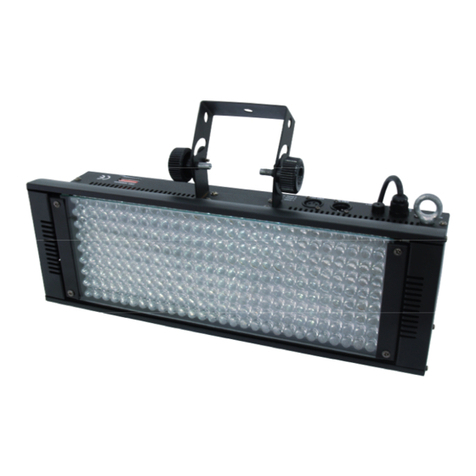
EuroLite
EuroLite 252 6000K user manual
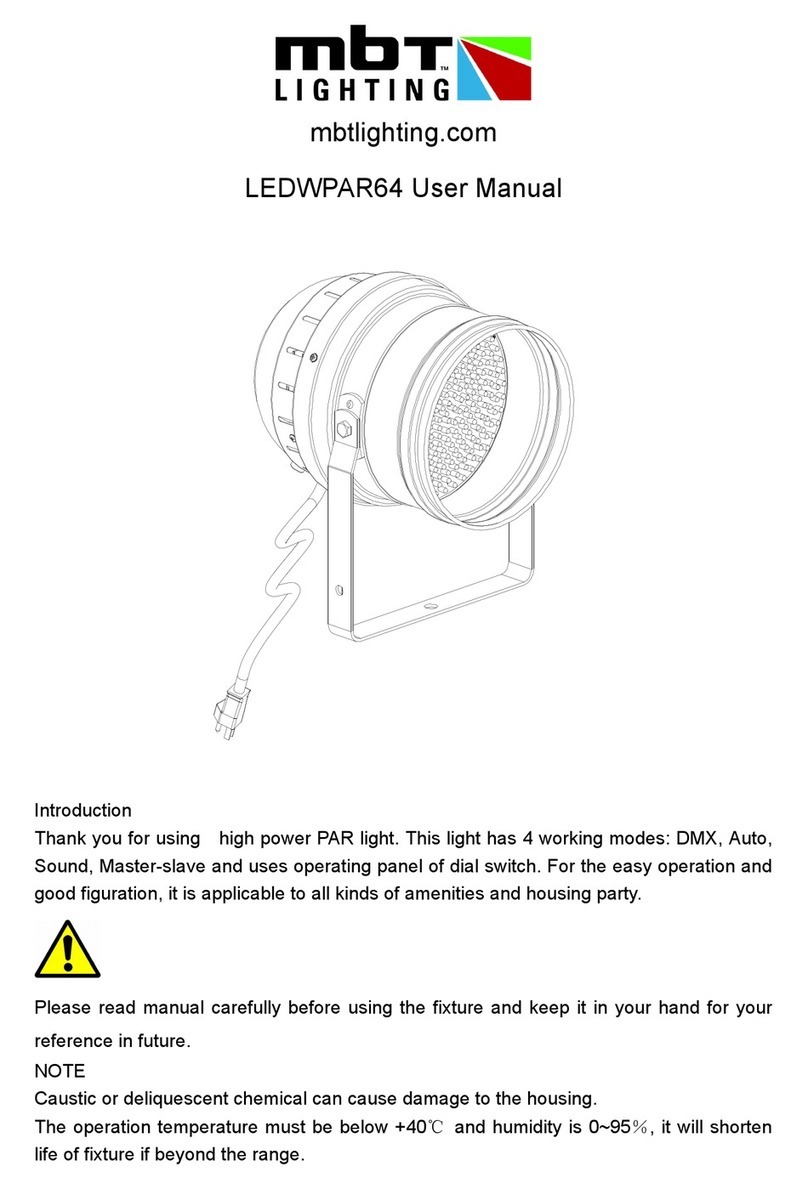
mbt Lighting
mbt Lighting LEDWPAR64 user manual
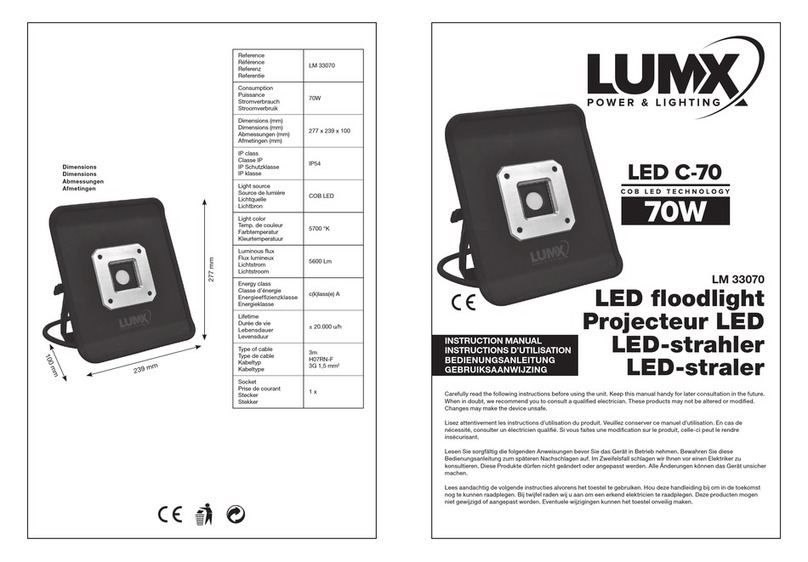
LumX
LumX LED C-70 instruction manual
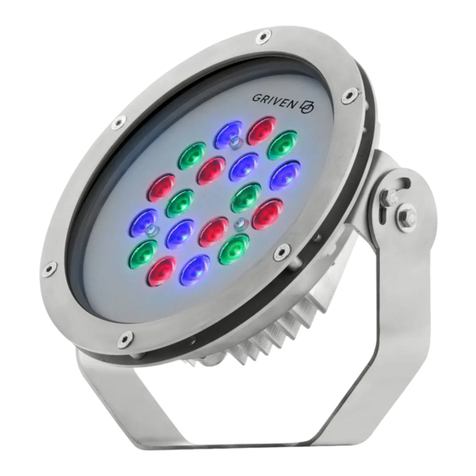
Griven
Griven Waterled MK2 instruction manual

BOSS ILLUMINATION
BOSS ILLUMINATION Fort product manual
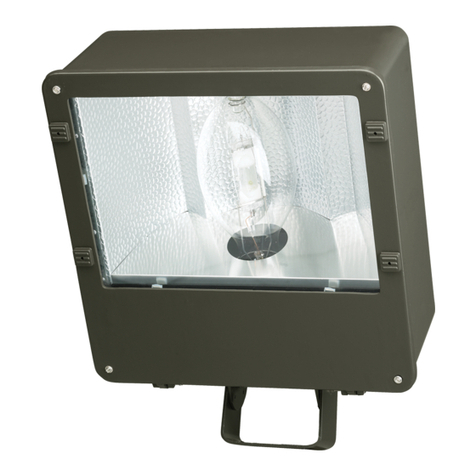
Atlas Lighting Products
Atlas Lighting Products FLLX Series installation instructions
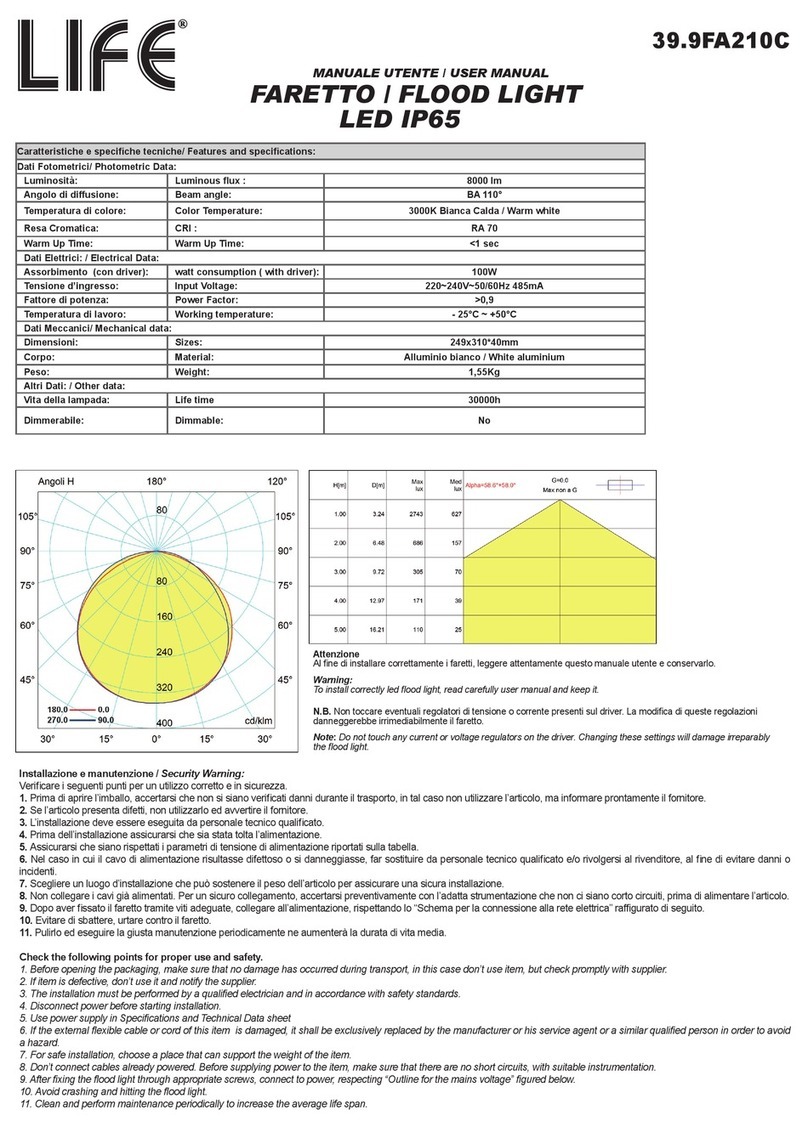
Life
Life 39.9FA210C user manual
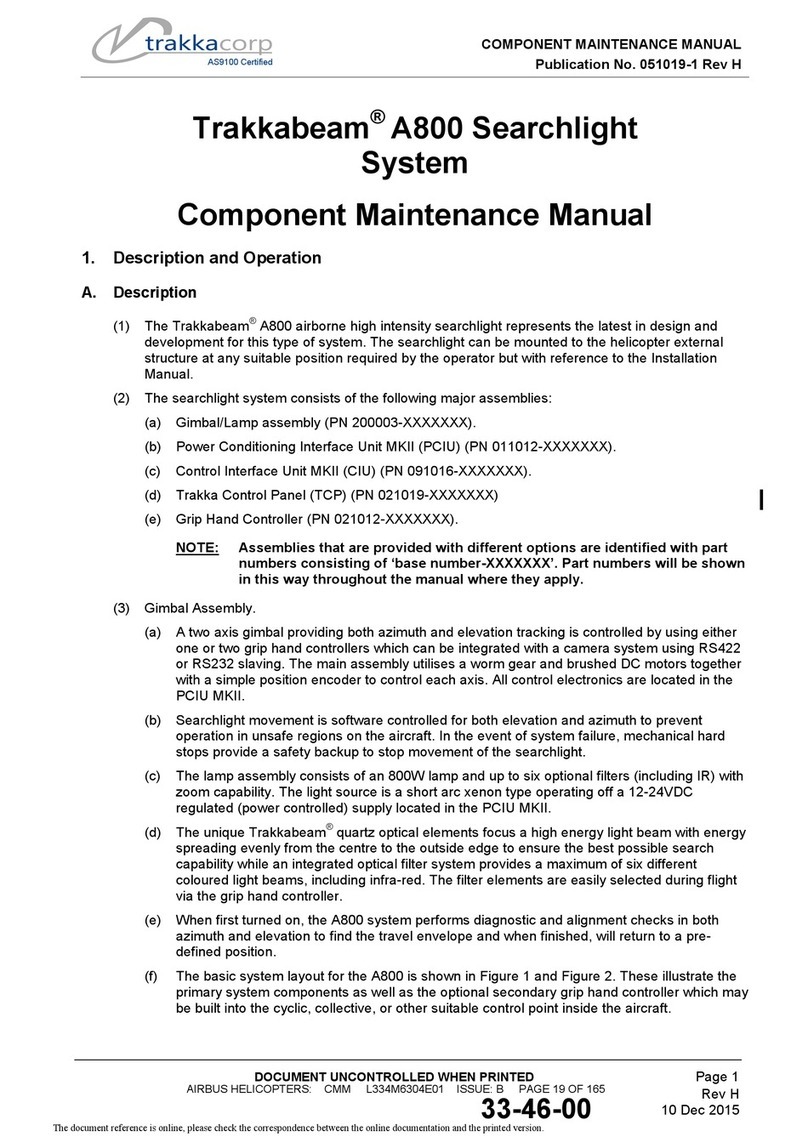
Trakka Corp
Trakka Corp Trakkabeam A800 Component Maintenance Manual
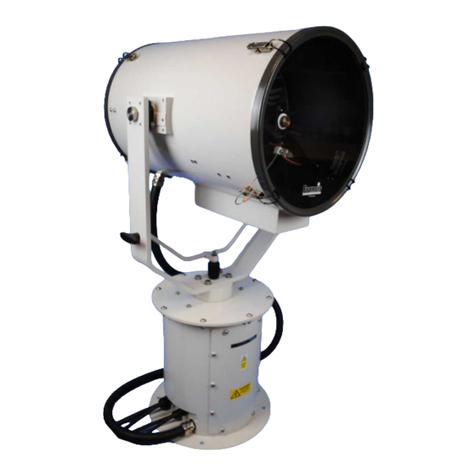
Francis Searchlights
Francis Searchlights A7164 User instruction & installation manual

Orbit
Orbit OFL60WB-SM Installation guide & owner's manual

Harman
Harman Martin Exterior Wash 300 Series user manual
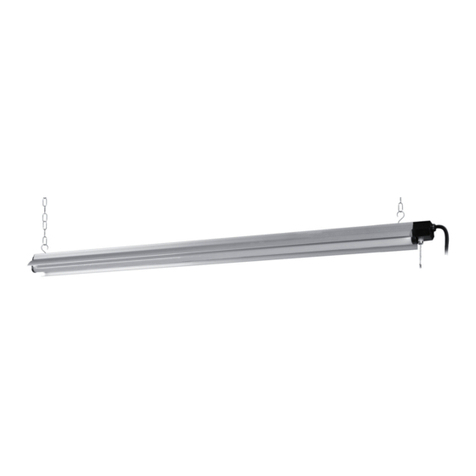
GT-Lite
GT-Lite GT-SL5000-LINK Assembly & installation
